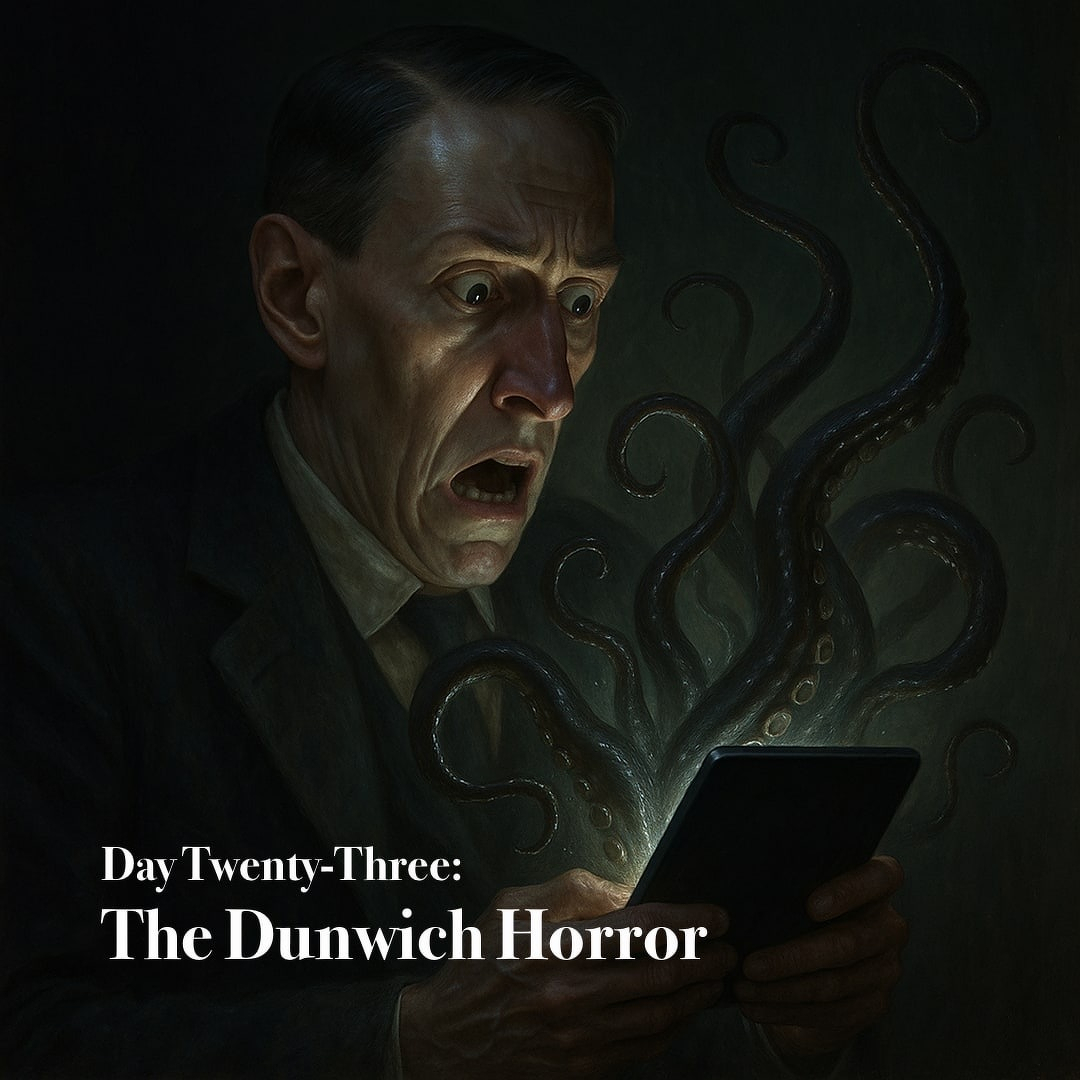The Dunwich Horror

“The Dunwich Horror,” among the most oft-whispered of H. P. Lovecraft’s abominable creations, stirred within me but a faint tremor of unease, as though its eldritch pulse had dimmed across the ages. Yet I read on with morbid delight, imagining how such a tale—of unseen spawn and profane rites—might unfold anew as an accursed adventure in the Call of Cthulhu role-playing game, whose genesis, I am certain, was sired by this very tale.
In the moldering hills of Dunwich, where decay clings to every roofbeam and the air reeks of ancient rot, there came into the world one Wilbur Whateley, the loathsome issue of Lavinia Whateley, an albino half-wit, and some father whose identity mortal tongues dare not name. His growth was an affront to nature, for within ten years he stood as a man, though no human mother could have claimed him. The folk of Dunwich avoided his gaze, and the beasts of field and forest shrank from his scent, which was not the odor of any creature born beneath the sun.
Under the tutelage of his grandsire, the wizened sorcerer called Old Whateley, the boy delved into forbidden arts and the blackest rites of witchcraft. Together they tended an unseen horror within their farmhouse, a presence bound to the dread god Yog-Sothoth. The structure grew strange and swollen with secret additions, while neighbors whispered of missing cattle and nocturnal chanting among the hills. When Old Whateley went to his grave and Lavinia vanished into the shadows, the unseen thing swelled to fill the dwelling entire.
Driven by purpose foul and cosmic, Wilbur sought at Miskatonic University the accursed Necronomicon, that he might open a gate to the Old Ones. Thwarted by Dr. Henry Armitage, he crept by night into the library and met death at the jaws of a hound that knew him for what he was. His carcass melted away, leaving only the stench of alien corruption.
Soon after, the imprisoned horror broke free. Invisible and vast beyond comprehension, it trampled the land, slaughtering without mercy. Armitage and his learned companions came with arcane powders and sacred words, revealing for a dreadful instant a form no sane mind could endure. Its dying cries to Yog-Sothoth echoed through the hills as it perished, leaving only a scorched pit. Then the awful revelation came: the monster was Wilbur’s twin, yet more faithful in form to its cosmic sire, a spawn of blasphemy and the cold abysses beyond the stars.
Lovecraft himself deemed “The Dunwich Horror” a tale so infernal that the Weird Tales editor editor Farnsworth Wright might recoil in terror from its printing. Yet the pages of Weird Tales received it, and the author was granted the princely sum of two hundred and forty dollars, the greatest reward his dread imagination had ever drawn from the world of men. Critics have spoken of the tale’s memorable corruption and its creeping sense of doom that grows as a miasma over ancient hills. Some, such as S. T. Joshi, have named it flawed in its struggle between light and darkness, though even he concedes its atmosphere is thick with the essence of nightmare. Within this tale, the Outer God Yog-Sothoth first revealed its presence to mankind, while the Necronomicon uttered its longest blasphemous passage. It was here also that Lovecraft’s haunted geographies took form, for the accursed towns of Arkham and Dunwich, and the unhallowed halls of Miskatonic University, became fixed forever in the cartography of cosmic dread.